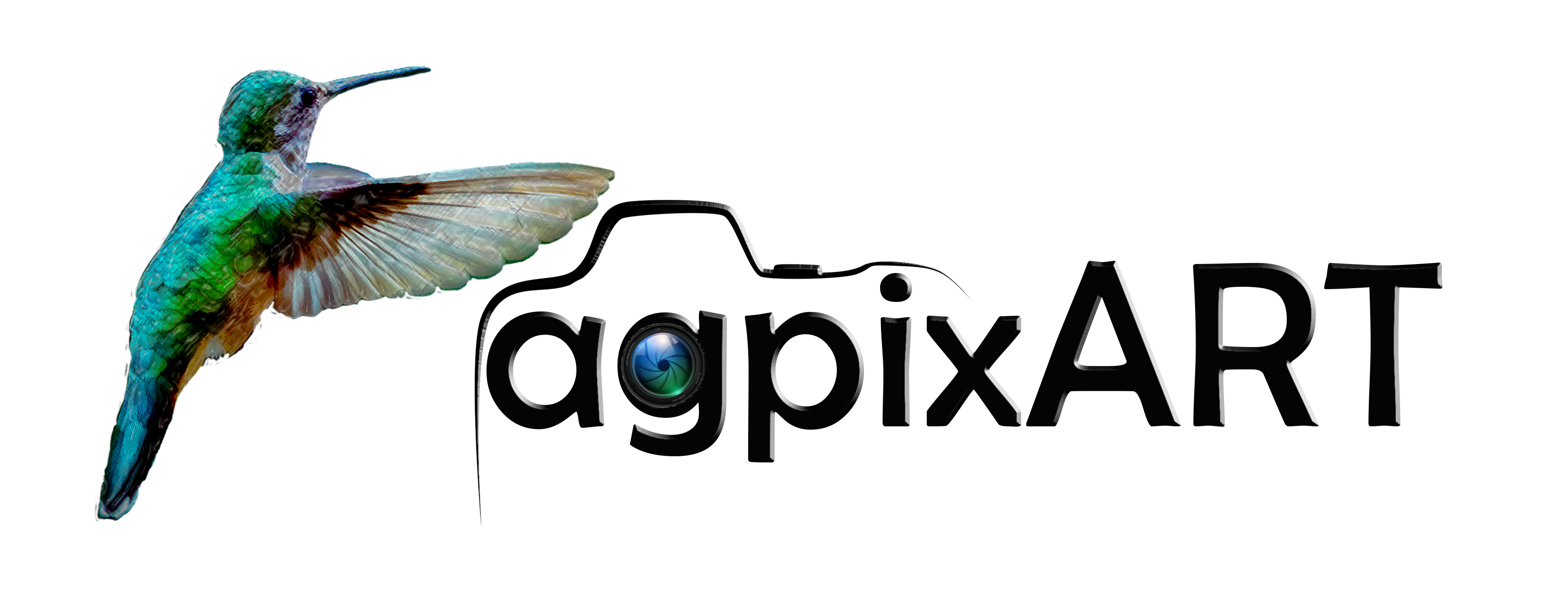Puerto Egas, Santiago
Puerto Egas is located on the western side of Santiago Island (also known as San Salvador or James Island) in the Galápagos Archipelago.
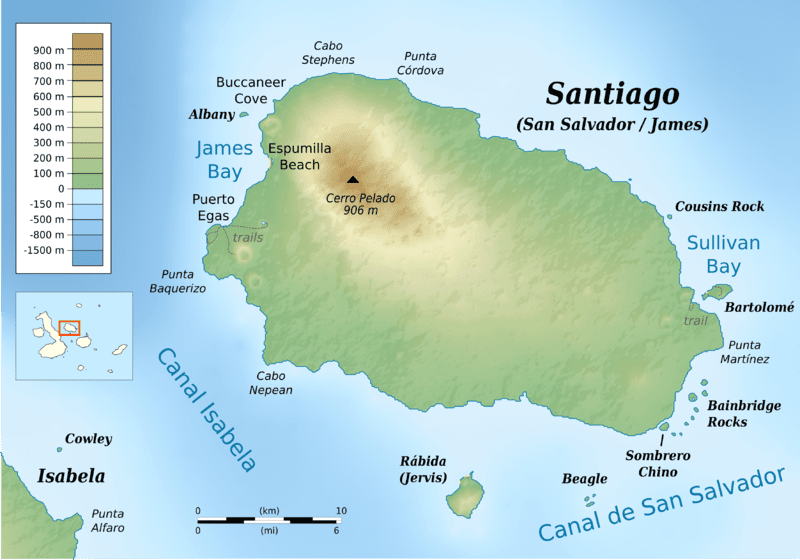
Explore Puerto Egas, Santiago Island
James Bay
Puerto Egas, named after Héctor Egas, who attempted to mine salt here in the 1960s, is a wet landing site on a black sand beach formed from eroded volcanic tuff. The area features a mix of coastal trails, tidal pools, lava formations, and a historic salt mine crater, offering a blend of natural beauty and human history.
The black sand beach, formed from volcanic tuff, is a striking contrast to the surrounding lava fields and is a resting spot for sea lions and marine iguanas.
Puerto Egas is a key stop on many Galápagos cruise itineraries due to its diverse ecosystems and accessibility for both hiking and snorkeling.
Good To Know…
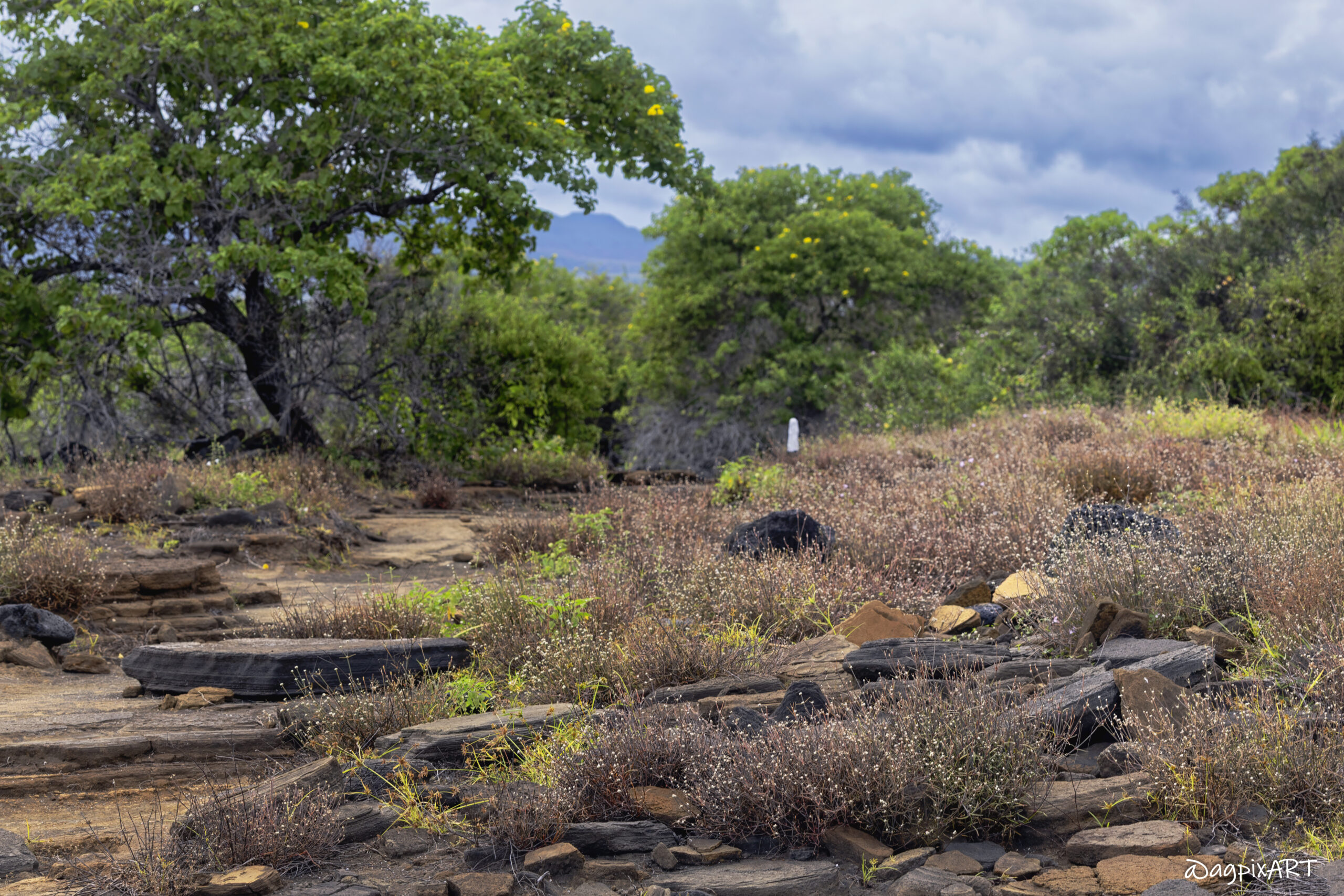
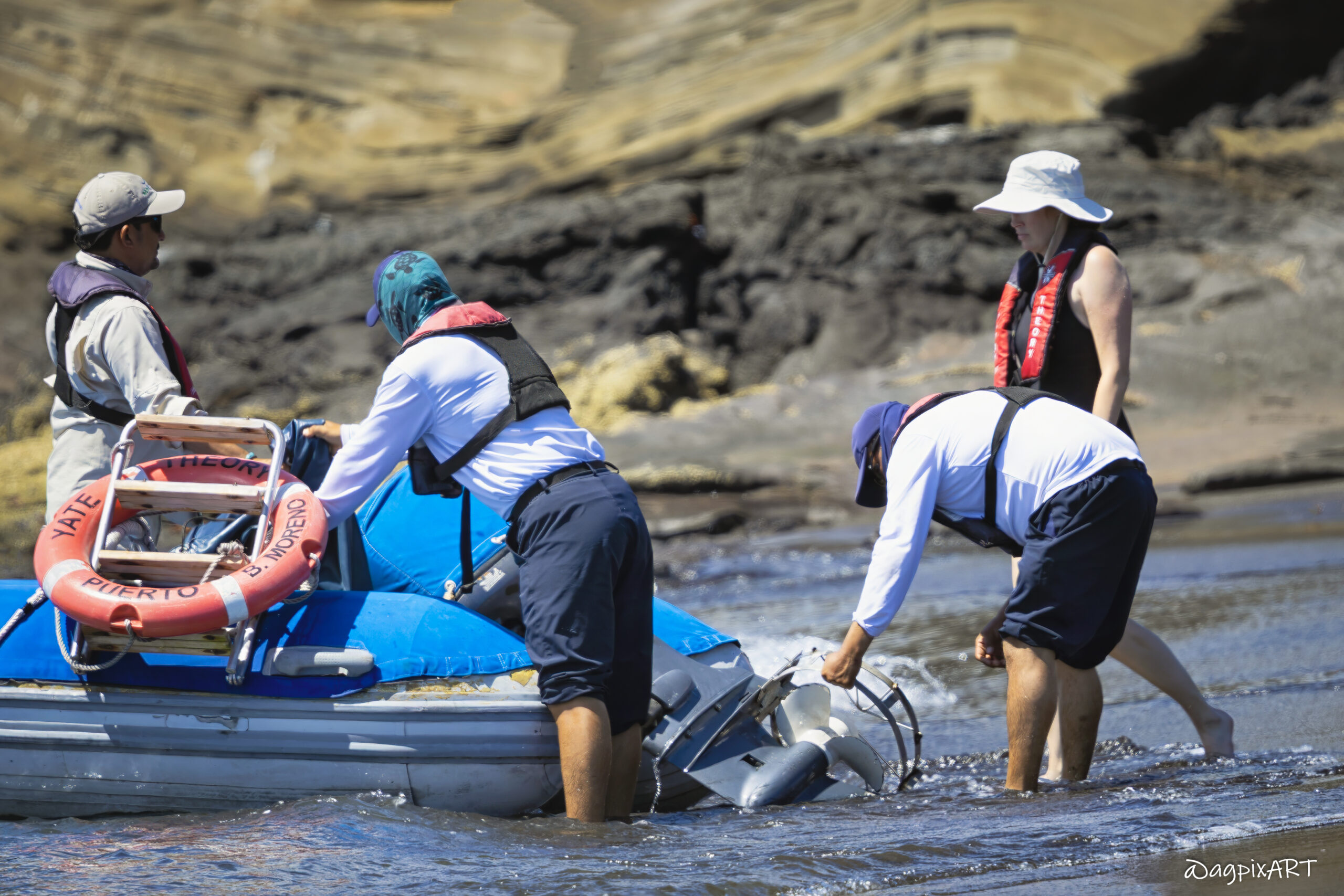
What-to-See
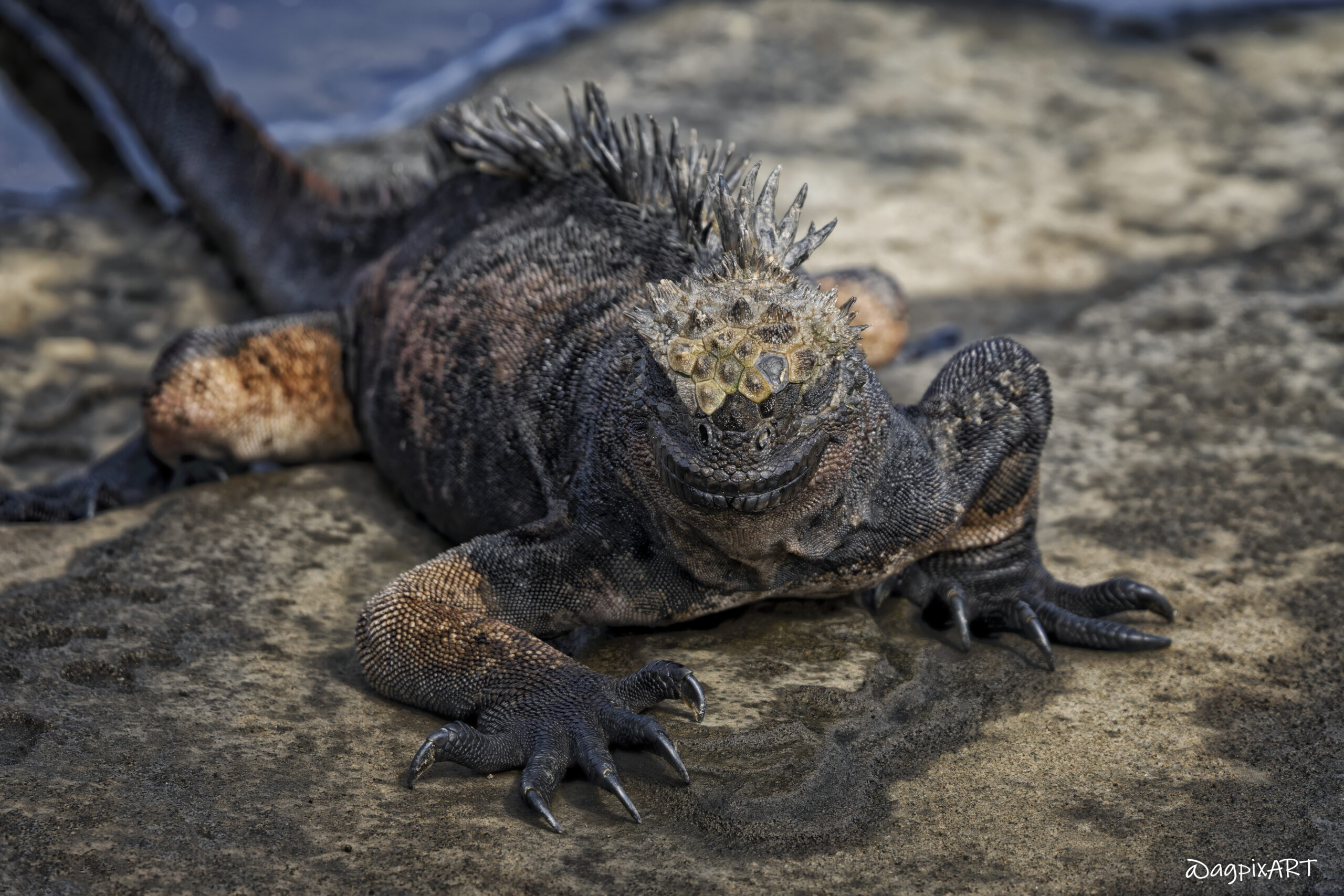
Marine Iguana
Marine iguanas (Amblyrhynchus cristatus) like to lounge on the rocky coastlines of Puerto Egas. They are nicknamed Galápagos Dragons for their prehistoric look and spiky crests and they are the world’s only seafaring lizards with clawed feet and a laterally flattened tail that aids swimming. Salt glands expel excess salt via sneezes, creating white “wigs” on their heads. They need to thermoregulate—basking on sun-warmed volcanic rocks to raise their body temperature after foraging in the cold ocean waters for algae, their primary food source.
Puerto Egas, provides an ideal habitat, as the dark lava rocks absorb heat, and the surrounding waters are rich in marine algae.
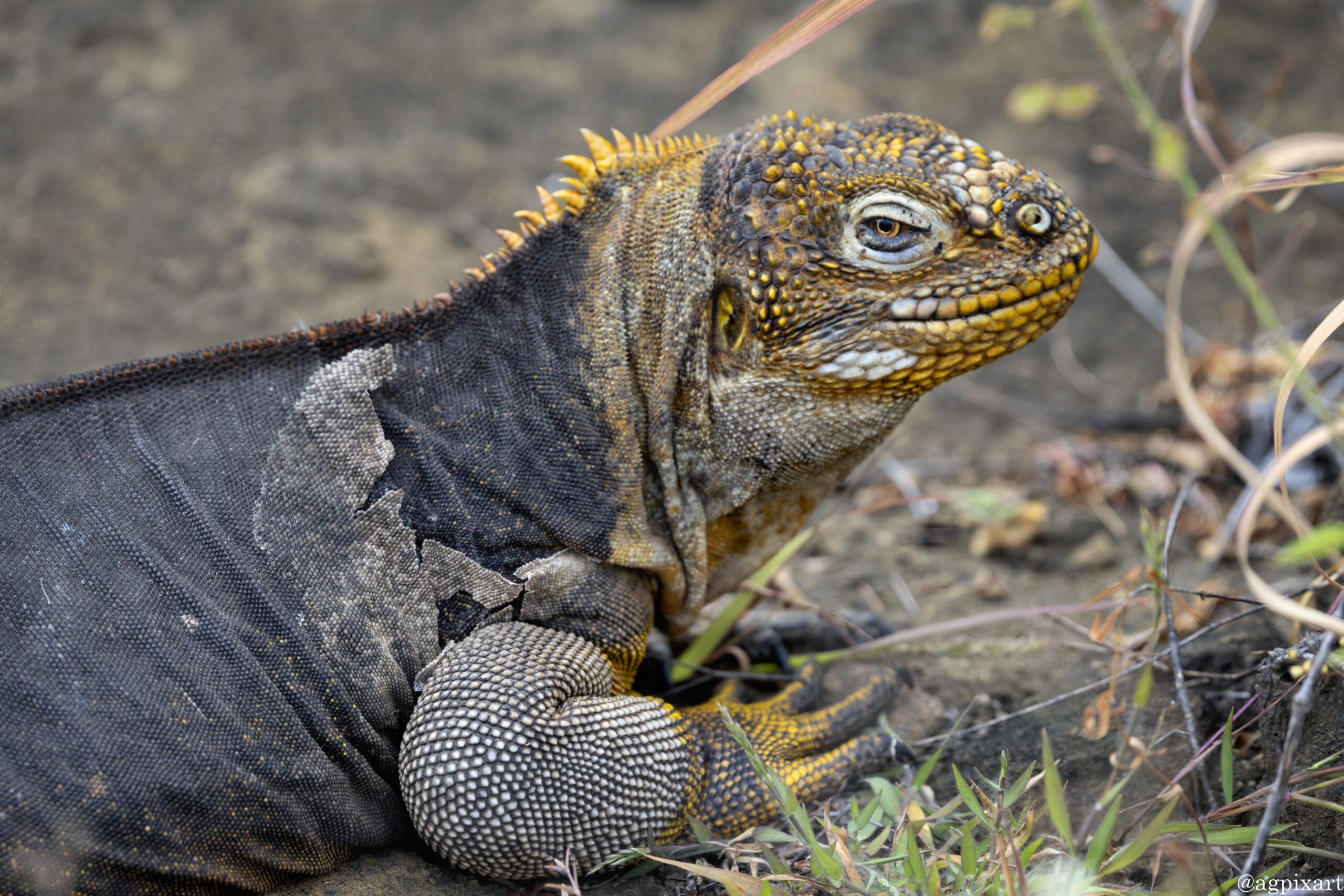
Galápagos Land Iguana
Land iguanas (Conolophus species) are iconic reptiles known for their prehistoric, dragon-like scaly, spiky appearance and yellow-orange hues. Males, especially during mating season (June to August), turn vibrant yellow or reddish, a striking sight against the dull terrain. They can grow up to 3–4 feet (1–1.2 meters) long and weigh up to 25 pounds (11 kg), with males being larger and more territorial, often head-bobbing to assert dominance. They are ectothermic, soaking up the sun on rocks to regulate body temperature, especially in the morning. Iguanas often lounge directly on the hiking paths, seemingly unbothered by passersby, asserting their dominance over the trail.
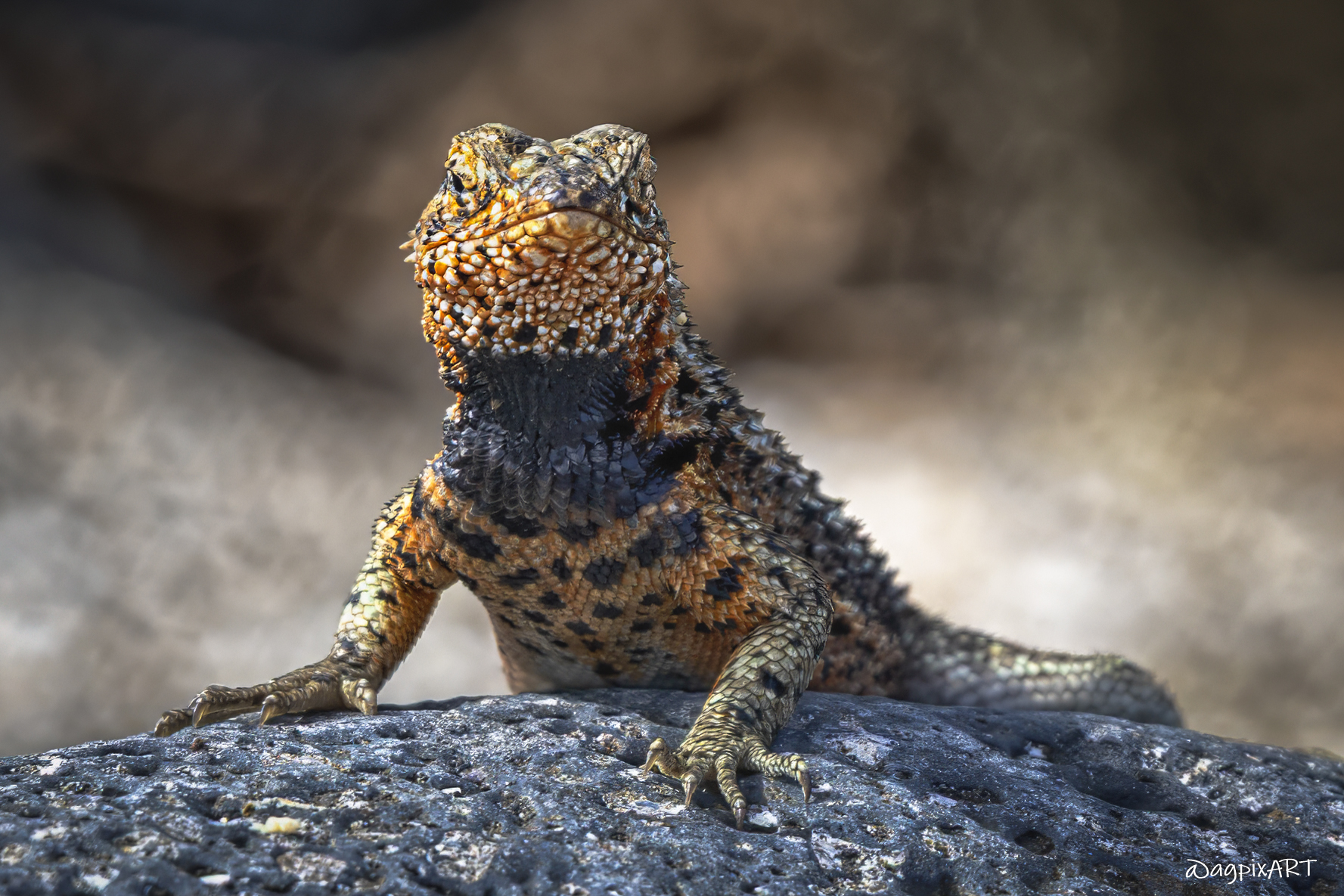
Lava Lizard
Tiny endemic lizards (Microlophus species) are a highlight of the site’s volcanic landscape, perfectly adapted to its rugged lava fields. They are small, 15–25 cm long (including tail), with males larger and more colorful than females. Males have mottled gray, brown, or black skin with yellow or reddish throat patches. Females are duller, often with a red or orange throat during breeding. They’re territorial, with males defending prime spots via head-bobbing and push-up displays. They are insectivores, feeding on ants, beetles, and spiders, often seen darting to snatch prey near tidal pools. They occasionally eat plant matter. They’re bold, coexisting with marine iguanas and sea lions.
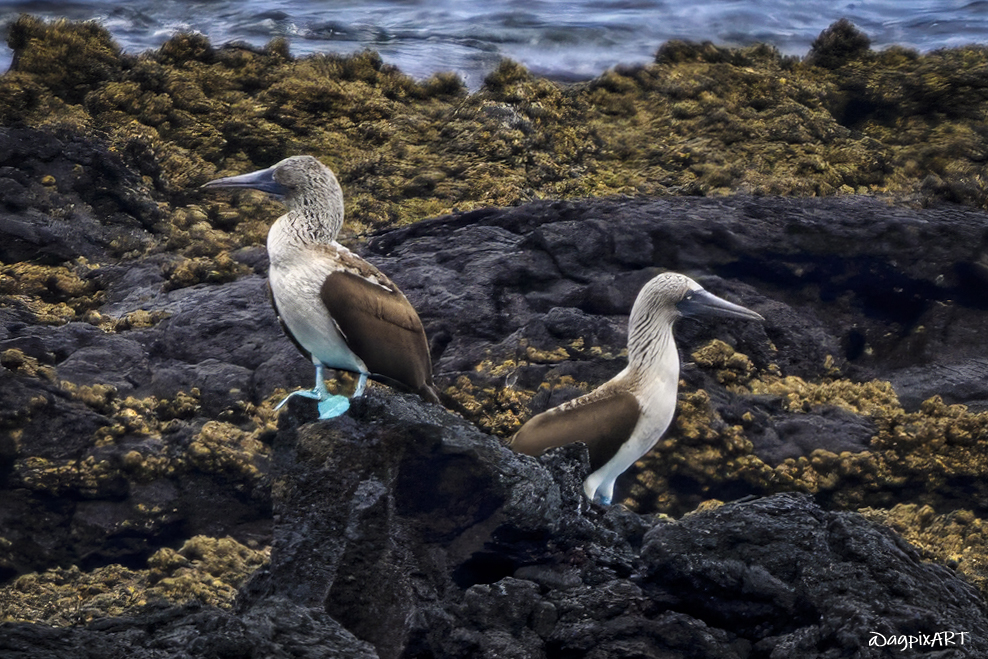
Blue-Footed Booby
Blue-footed Boobies (Sula nebouxii) are iconic Galápagos seabirds. Their name derives from the Spanish word “bobo” meaning foolish or clown-like, referencing their comical waddle and bright feet.
Their bright turquoise or blue feet are more vibrant in healthy, breeding adults. Males typically have brighter feet, while females have slightly duller ones. They have a white body with brown wings, a grayish-blue beak, and a distinctive brown patch on the chest. Juveniles have duller, grayish feet and mottled plumage. They are incredibly agile in the air and can dive into schools of fish from heights as high as 100 feet, as well as catch flying fish mid-air.
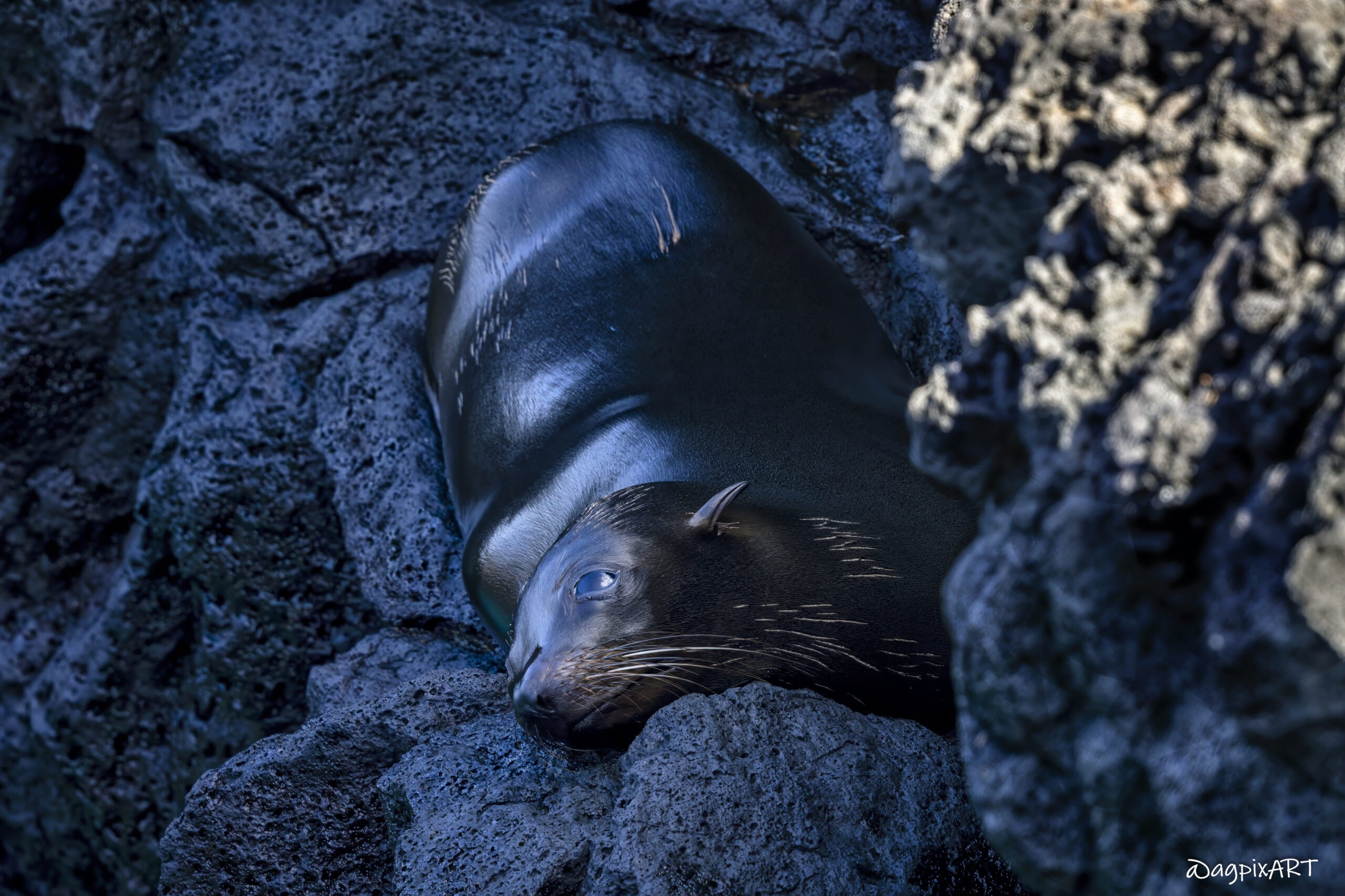
Galápagos Sea Lion
Sea Lions (Zalophus wollebaeki), are called sea puppies for their dog-like barks and puppyish antics in the water. Males grow up to 2.3 m long and 200–400 kg, with a muscular build. Females are smaller, reaching 1.8 m and 60–120 kg. Pups weigh 6–8 kg at birth. Sleek, chocolate-brown coats shimmer when wet, fading to a lighter tan when dry. Streamlined bodies, strong flippers, and external ear flaps make them agile swimmers. They are highly social, forming colonies with loose hierarchies. Pups are darker with big, expressive eyes. Mothers leave pups for hours (sometimes 1–2 days) to hunt fish and squid offshore.
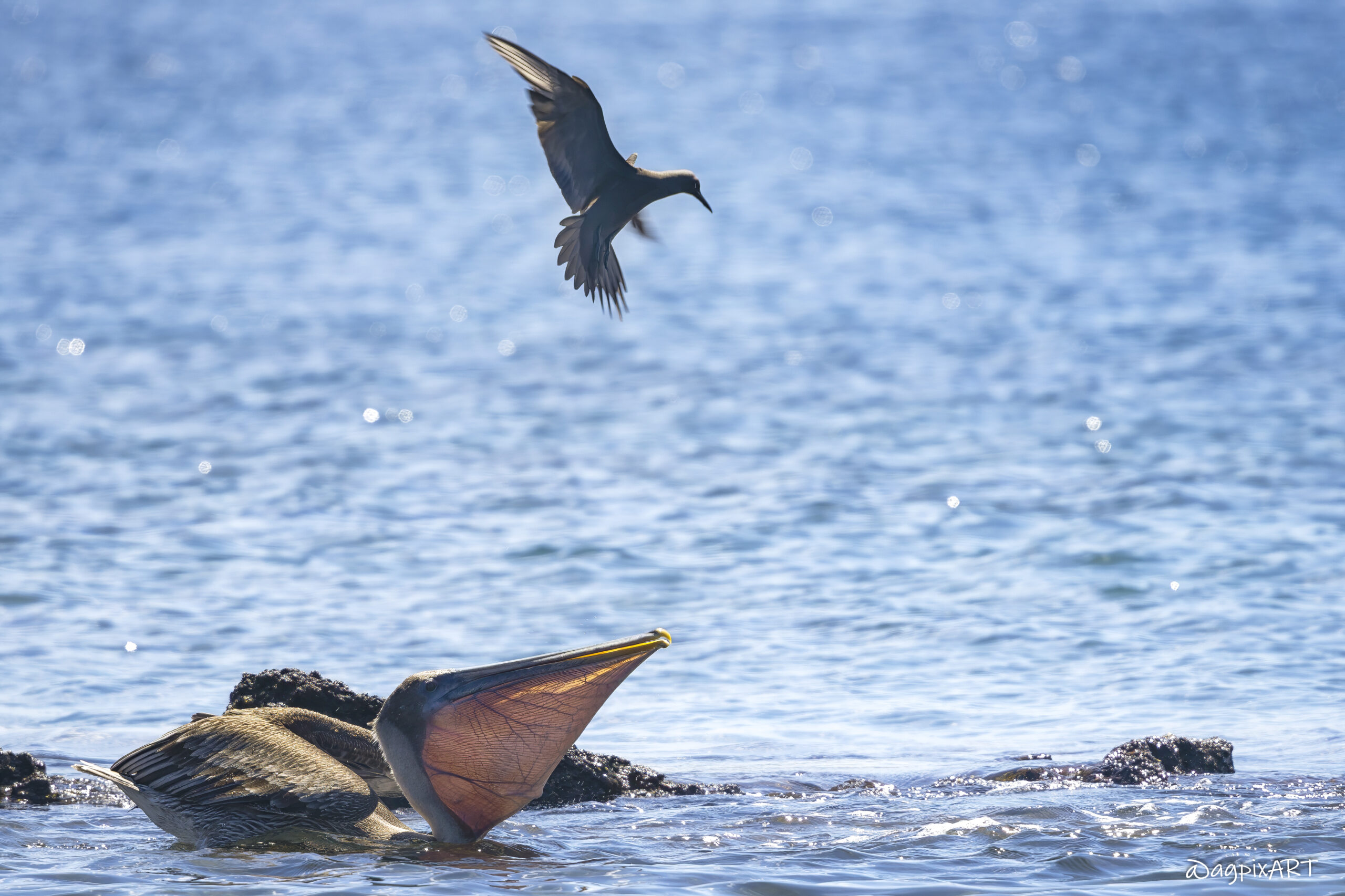
Galápagos Brown Pelican
Brown pelicans (Pelecanus occidentalis urinator) are famous for their dramatic plunge-dives, diving from up to 60 feet (18 meters) into the waters to scoop up fish.
Their stretchy throat pouch can hold up to 3 gallons (11 L) of water and fish. They feed on small fish like sardines.
During mating season (peaking in warmer months), males develop vibrant reddish or yellowish hues on their pouches.
The brown pelicans are a unique Galápagos subspecies, slightly larger than mainland cousins, adapted to the island’s rich marine environment.
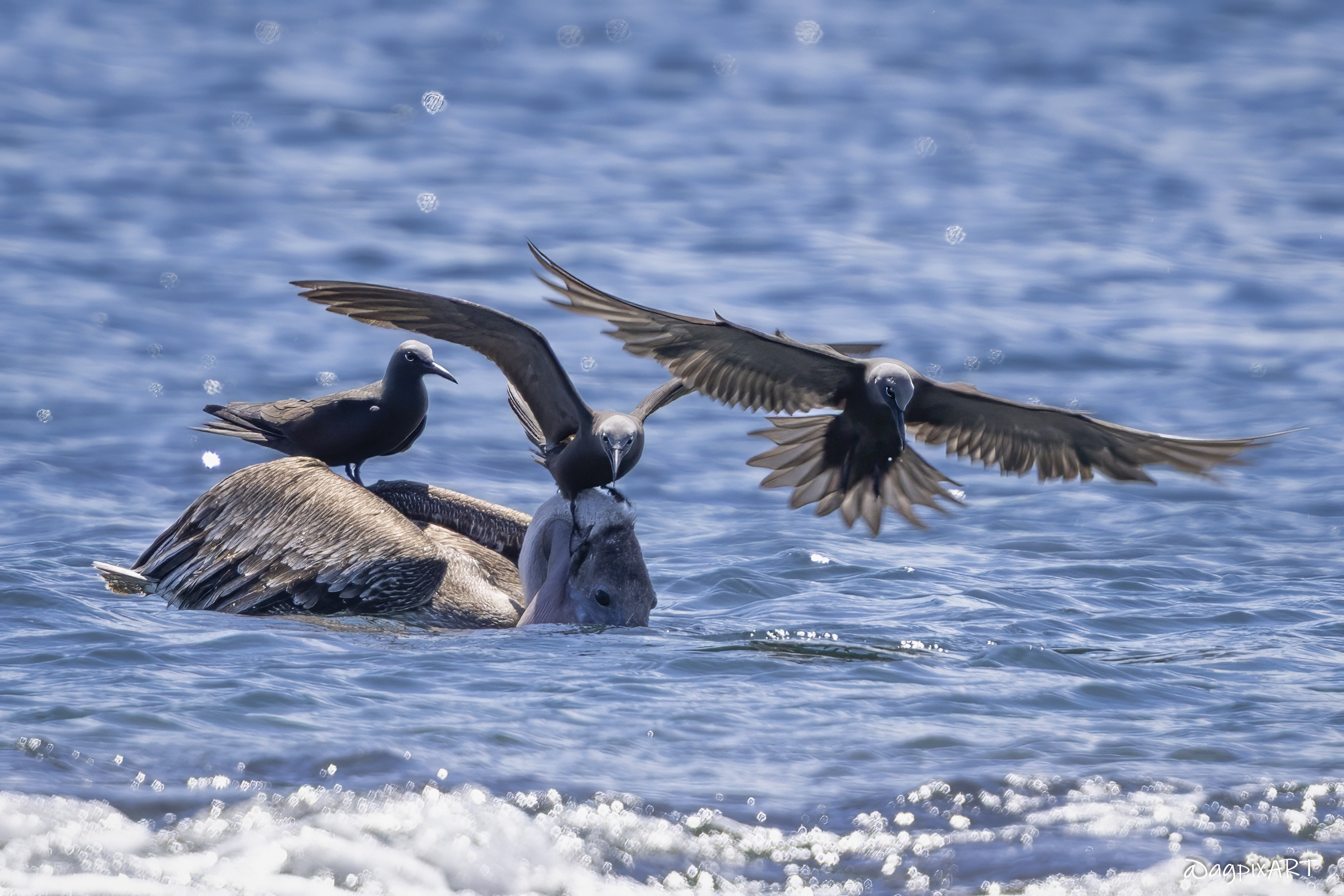
Brown Noddy Tern
The brown noddy (Anous stolidus) commonly found in the Galápagos, is known for its sooty-brown plumage, white forehead cap during breeding season, and graceful flight. Found in coastal and marine habitats, foraging for small fish and crustaceans by surface-dipping or hovering. Its common behavior is kleptoparasitism, stealing food from other seabirds like pelicans, harassing them to regurgitate or drop their catch. They nest in colonies on cliffs, mangroves, or low shrubs. Nests are simple platforms of twigs, seaweed, or debris, often cemented with guano. A single egg is laid with both parents sharing incubation duties for about 35 days.
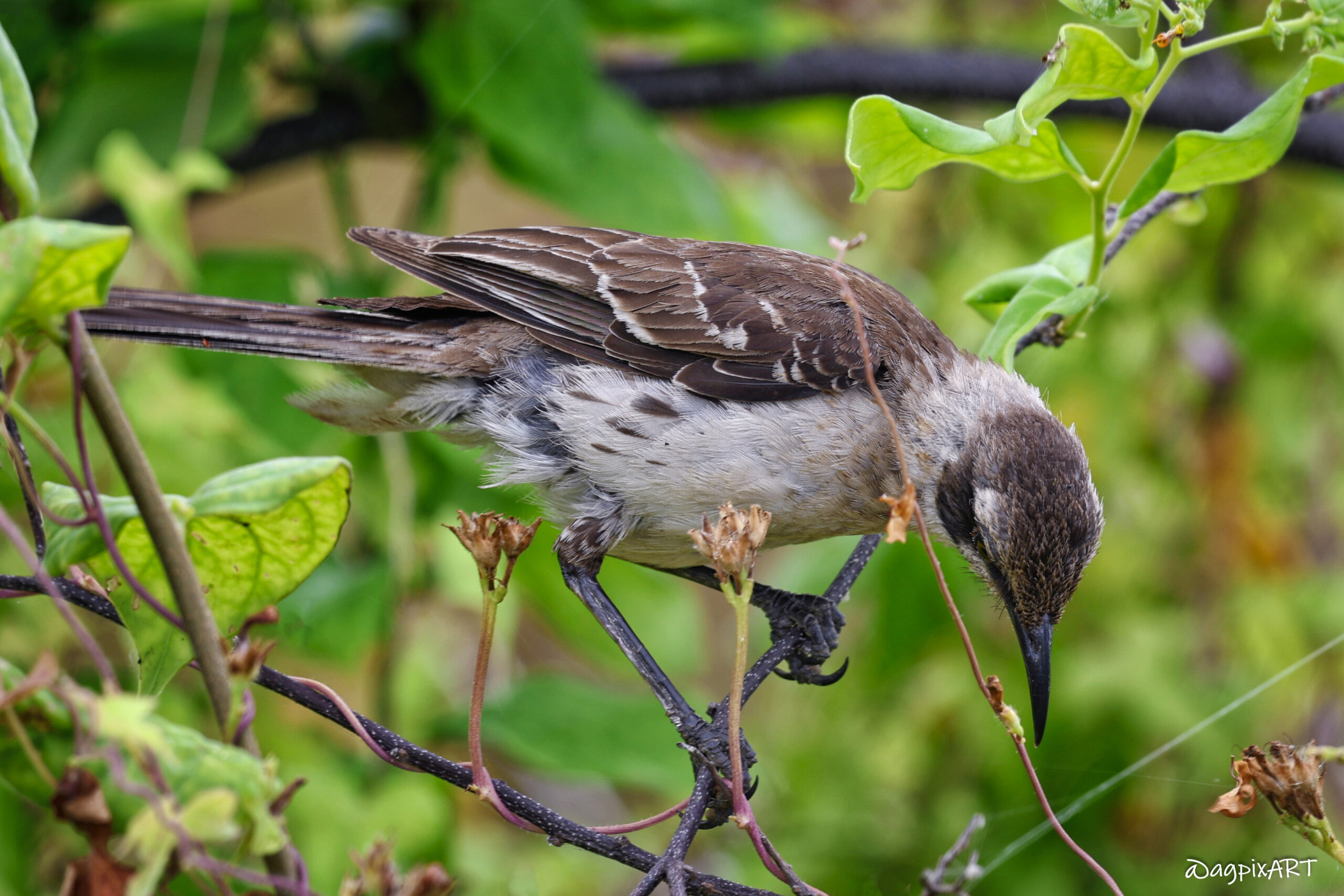
Galápagos Mockingbird
The Galápagos Mockingbird (Mimus bauri) is one of four endemic mockingbird species inhabiting the islands. It is a small, grayish-brown bird known for its complex vocalizations, often mimicking other species. Their strong wings allow agile maneuvers to chase insects or evade predators like short-eared owls. Unlike most birds, mockingbirds often live in cooperative family groups where younger siblings help raise new chicks, a rare social behavior that boosts survival in the harsh environment.
They build simple twig nests in cacti or low shrubs, often reusing them across seasons, and both parents share incubation duties for about 12–14 days.

Galápagos Flycatcher
Galápagos Flycatchers (Myiarchus magnirostris) are small birds (about 15 cm/6 inches long) with grayish-brown upperparts, a slightly paler gray throat, and a faint yellowish wash on the belly. They have a distinctive crest and a large, broad bill, giving them a bold look despite their muted colors.
They frequent the arid coastal zones and scrubby vegetation, perching on low branches or shrubs like the thin-leaved Darwin’s shrub. They prefer open areas for hunting insects and are active hunters, making short, acrobatic flights to catch insects in mid-air before returning to their perch.
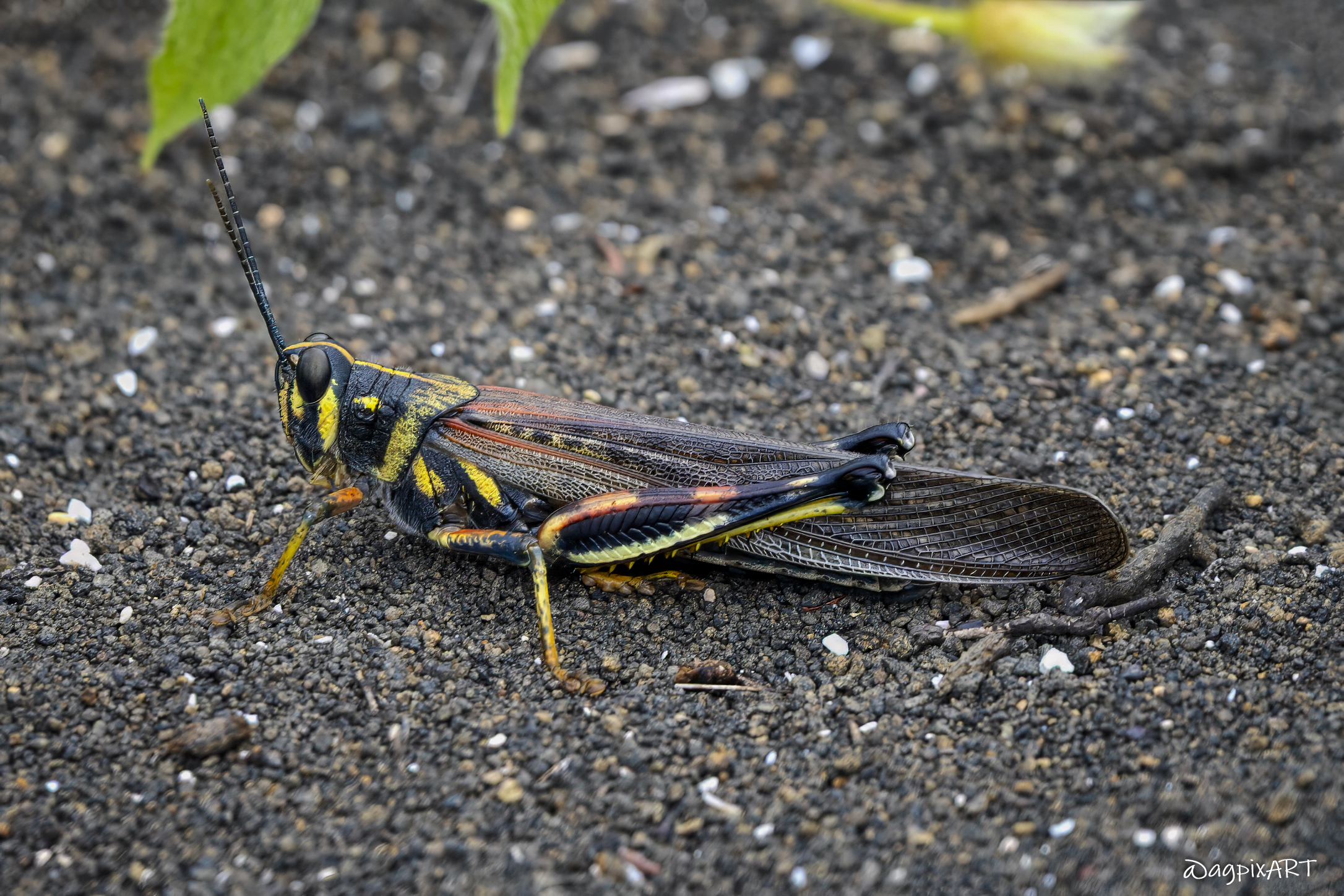
Large Painted Locust
The Painted locust (Schistocerca melanocera) is a native species with a stable population and one of the most vibrant insects in the islands, known for its bright coloration, including shades of yellow, red, and black. They grow up to 8 cm long, are strong fliers and jumpers, capable of leaping up to 3 meters. Their agility helps them evade predators like Galápagos hawks and lava lizards. The best time to spot large painted locusts at Puerto Egas is during the wet season (March to May), when they are most active and abundant due to increased vegetation. Unlike typical locusts, Painted locust rarely forms destructive swarms in the Galápagos due to limited food resources and predation pressure.

Sally Lightfoots Crabs
Sally Lightfoot Crabs (Grapsus grapsus) commonly scavenge on wave-washed lava. Large adults are vibrant red, orange, or blue with a pale white or blue underbelly, standing out against black lava rocks. Juveniles are dark brown or black with red spots for camouflage to avoid predation. They have five pairs of legs, with front claws (chelae) for grasping food. Their broad, flat legs allow agile movement, often described as “spider-like.” These crabs are opportunistic omnivores, feeding on red and green algae, dead fish, bird droppings, sea lion placenta, baby sea turtles, and even other crabs.
Known for their incredible agility, they run in four directions, leap, and climb vertical slopes.

Galapagos Silver Fritillary
The Galápagos silver fritillary (Agraulis vanillae galapagensis), a subspecies of the gulf fritillary, is a striking butterfly with bright orange wings with black markings on the upper side and distinctive silver spots on the underside, giving it its name. It is a common sight from coastal areas to the highlands, thriving in the rainy season when flowers bloom vigorously, supporting its role as a secondary pollinator alongside the islands’ sole bee species, the carpenter bee. Their larval host plants are passion vines (Passiflora species), such as Passiflora foetida. The caterpillars are orange with black spines, and the chrysalis resembles a curled, olive-brown leaf with silvery streaks.
Instructions for photo proofing and comments:
Left-click on the photo to access options for title information (i), leave comment, or mark the photo(s) as the favorite. The option to submit the selected as favorite photos is under “Submit proofs” button under photo gallery.
